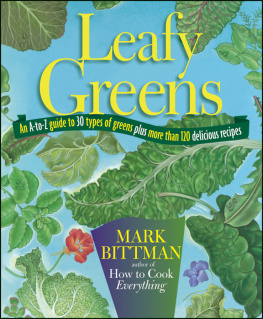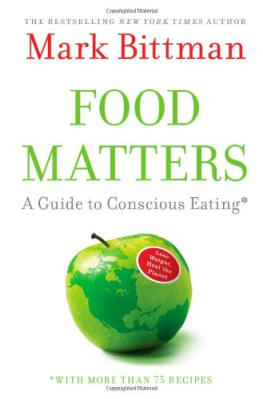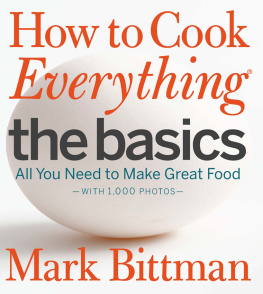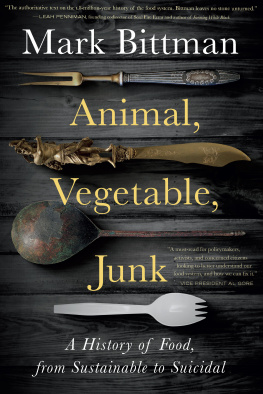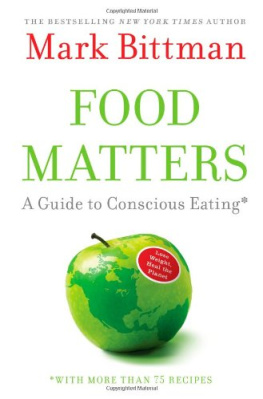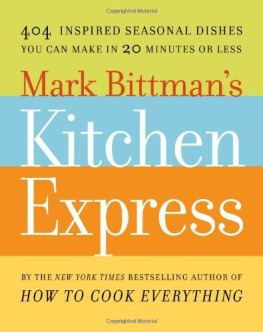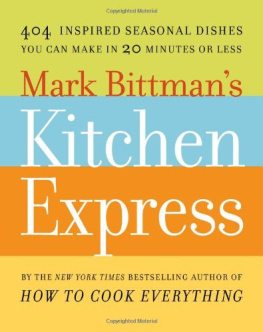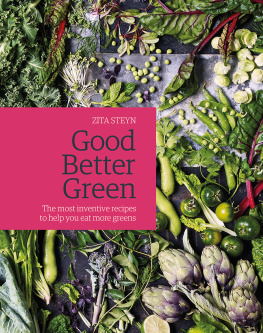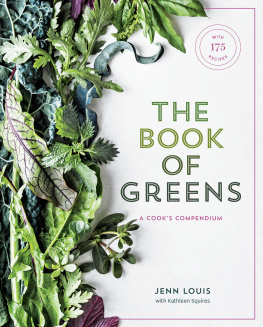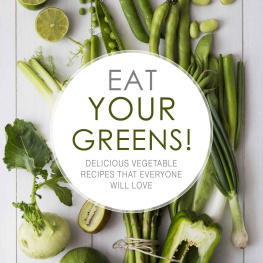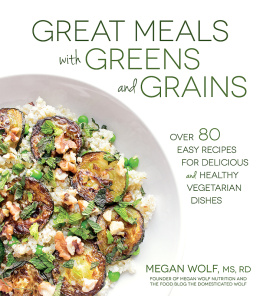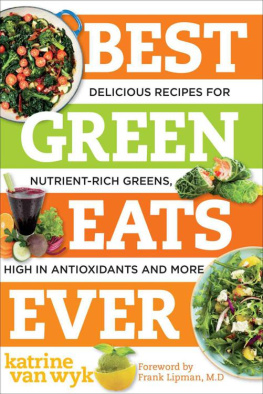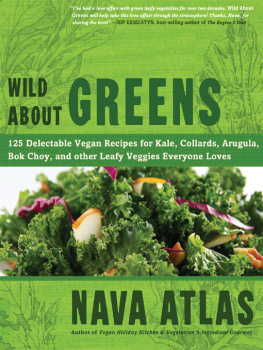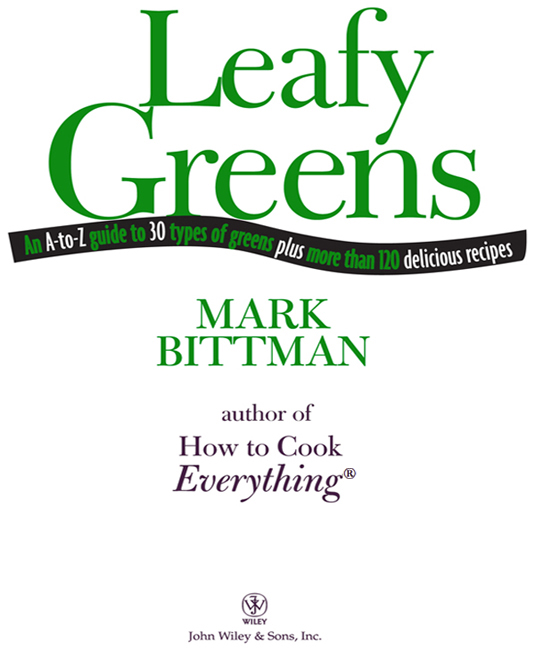MACMILLAN
A Simon & Schuster Macmillan Company
15 Columbus Circle
New York, NY 10023
Copyright 1995 by Mark Bittman
Illustrations copyright 1995 by Francesca Palazzola
All rights reserved. No part of this book may be reproduced or transmitted in any form or by any means, electronic or mechanical, including photocopying, recording, or by any information storage and retrieval system, without permission in writing from the Publisher.
MACMILLAN is a registered trademark of Macmillan, Inc.
Library of Congress Cataloging-in-Publication Data
Bittman, Mark.
Leafy greens / Mark Bittman
p. cm.
Includes index.
ISBN 0-02-860355-9
1. Cookery (Greens) 1. Title.
TX803.G74B58 1995
641.654dc20 95-11777 CIP
Other Books by Mark Bittman
How to Cook Everything The Basics
How to Cook Everything
How to Cook Everything Vegetarian
How to Cook Everything Bittman Takes on Americas Chefs
Food Matters
The Food Matters Cookbook
The Best Recipes in the World
Fish: The Complete Guide to Buying and Cooking
Mark Bittmans Kitchen Express
Mark Bittmans Quick and Easy Recipes from the New York Times
For Kate and Emma, who are the best
Introduction

ITS NO SECRET that vegetables, grains, and fruits are the future of the American diet; recent statistics show that health-conscious people are eating less meat and that this practice is becoming a habit. Many people, however, are looking to get past what has become a pasta-dominated way of eating.
Looking back over the past few years, its clear that we emerged from the 80s craving the strong flavors we grew to love as the new American cuisine developed. But as we turned from red meats to chicken, grains, and legumes, we found that because these foods are essentially bland, it takes more work to make them taste good (few foods pack as much flavor with as little work as a grilled steak). I remember an article I wrote about chicken for Cooks in 1990, the thrust of which was that since we were now eating less bold-flavored foods, we were going to have to learn how to cook them with flavorful sauces, using the herbs, spices, and flavors of the international community. That is exactly what has happened.
Leafy greens, however, dont require that kind of flavor-building workup because they contain as much intrinsic taste as any other food group on earth (which undoubtedly explains why most kids find them fearsome).
Still, greens have taken some getting used to. When I was a child, iceberg lettuce was the only fresh green that regularly appeared in our housecabbage never showed its head, collards were as likely to grace the table as was milk weed, dandelions were for blowing, and spinach was inevitably canned.
But the past 30 years have seen a convergence of factors that have boosted the green vegetable to prominence.
Superior transportation and new hybrids made fresh vegetables a staple throughout the country, even in winter.
We have developed a cuisine of shared cultures, which means that dandelions, for example, are no longer the exclusive property of Italians.
We always knew that vegetables were good for us, but we didnt know how good. (Nor did we know how bad for us some of the alternatives are.)
Finally, we learned how to cook. Although Italian cooking teacher and author Giuliano Bugialli has remarked, We Italians do not undercook our vegetables, we Americans have learned that while some vegetables respond well to long, slow cooking, others can be quick-steamed or sauted with crunchy and delicious results.
The upshot of all this is that there are more green, leafy vegetables in our markets than weve ever seen before, begging to be tossed in salads, stir-fried, sauted, and stewed. And, unlike beans and even some meats, each is distinctive. In fact, it would be easier to determine the difference in the dark between steamed, unadorned collards and dandelions and steamedor even sautedveal and chicken.
When I say leafy greens, Im talking about everything from spinach and chard to dandelions, kale, turnip greens, lettuces, watercress, and more. (In my garden every year we grow at least twenty different greens, not including lettuces.) Lettuces are a part of this mix, too, and although they dont pack the nutritional or flavor punch of the darker greens, lettuces are interesting thanks to their sheer varietythese days, you can find at least a half-dozen varieties even in supermarkets, and the selection in specialty stores (and in California markets) is stunning.
The sheer number of edible greensprobably about 300 in this country alonemeans that Ive had to make some choices about what not to cover in these pages. Basically, Ive eliminated the most esoteric greens, those available only to gardeners (at this date; this will change), wild greens that are never (again, subject to change) sold in storessuch as nettles and milkweedherbs that are sometimes used as greens, like parsley and burnet, and the greens of flowers, many of which are good to eat. What I have included are all the good eating greens that you are likely to find in specialty stores, farmers markets, and of course supermarkets. Which still leaves us with several dozen in this book.
When they are extremely young, any greensfrom Chinese cabbages such as bok choi to dark greens like kale or watercressmake delicious additions to green salads; mixed with lettuces, herbs, and even flowers, they form the wonderful mixed-salad combination known in southern France (and, often, in this country) as mesclun. Although greens are beginning to appear with some regularity in specialty food stores and even supermarkets, gardeners are most likely to take advantage of them in this way. (Gardeners should see .)
As they grow larger, however, most greens become bitter in their raw state; they also become tougher with age. Never fear: Cooking techniques for all of them are quick and simple. Almost any green can be sauted or used in stirfries, or stewed to a melting tenderness. There is nothing easier than cooking greens, and few things more rewarding.
Eating Greens for Health
For me, flavor is enough of a reason to eat leafy greens; but the fact that they are arguably the most valuable foodstuffs on the planet doesnt hurt.
Although the National Cancer Institutes effort urging us to eat five fruits and vegetables a day is soundwhenever any plant food replaces a cheeseburger, a bag of chips, or a bowl of ice cream, your intake of total fat, saturated fat, and calories is likely to decrease, and with it your risk of most chronic diseasesthe nutritional content of most vegetables simply clobbers that of most fruits. Although grapes, for example, contain some fiber and a smattering of vitamin C, collards are so packed with nutrients that if they were a manufactured food, the FDA might insist that they undergo tests. From a nutritional perspective, dark green leafy vegetables are the superstars of the food world.
Most dark greens are high in traditional nutrients such as vitamins C and E and beta carotene, powerful antioxidants whose cancer-fighting role is only just being appreciated; folic acid, recently found to play a part in preventing neural tube birth defects and also possibly a major contributor to the fight against cancer (research is in the early stages); and tumor-reducing fiber. Some also contain significant amounts of iron and calcium (of special importance to vegetarians) as well as important trace elements from the soil such as magnesium, zinc, selenium, manganese, and copper.

